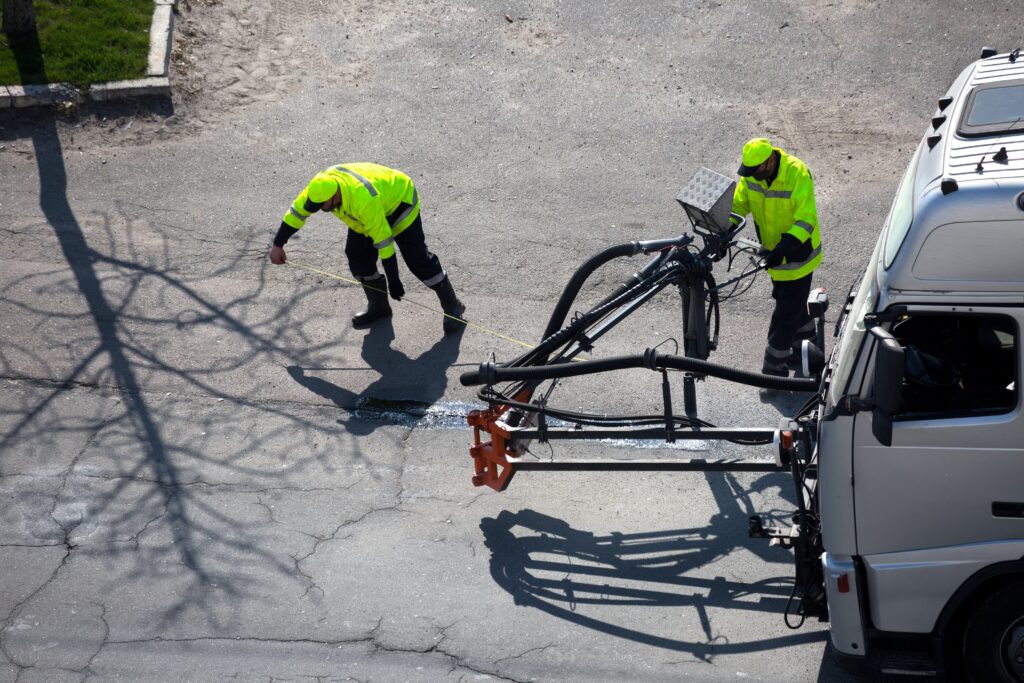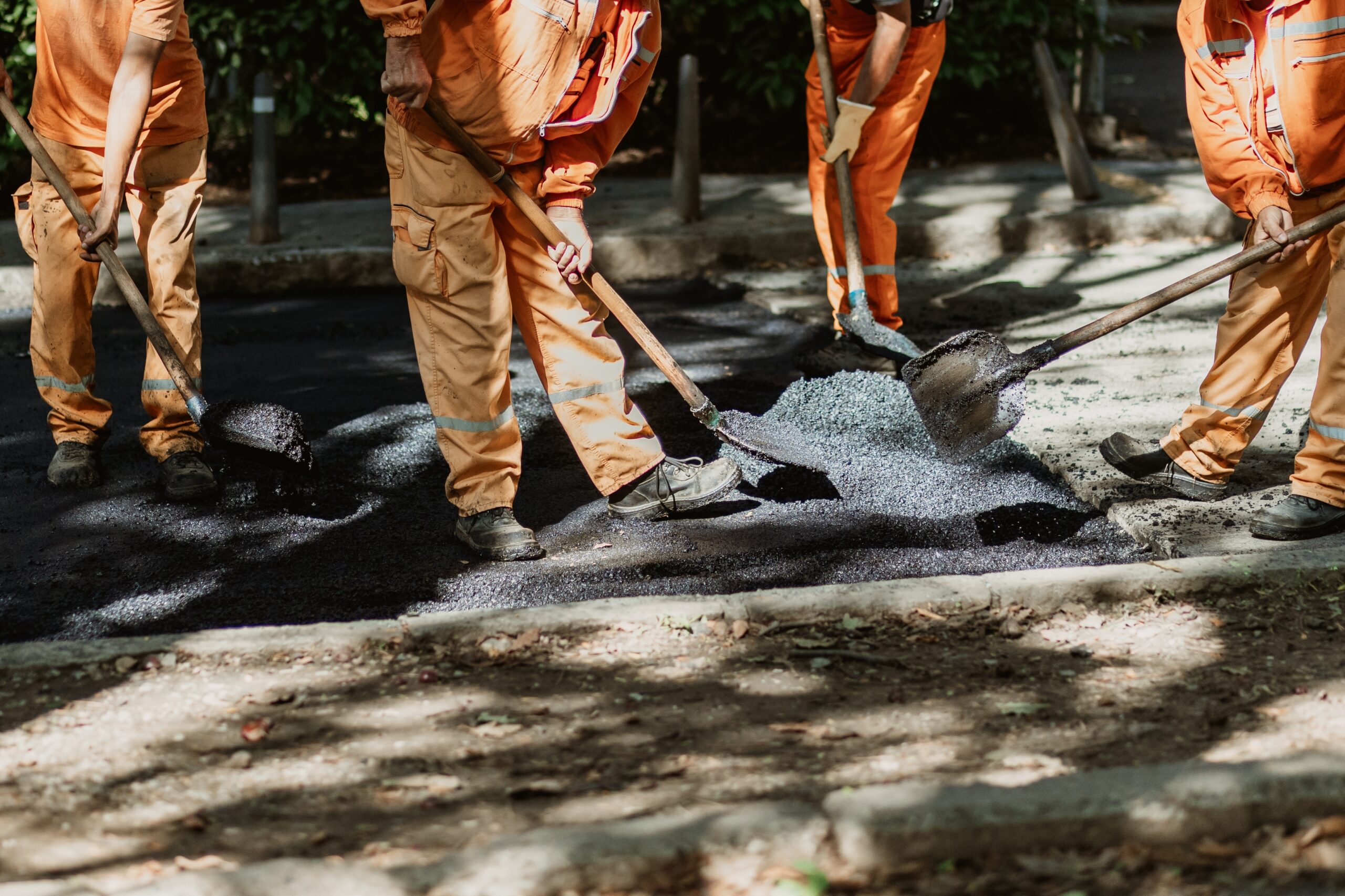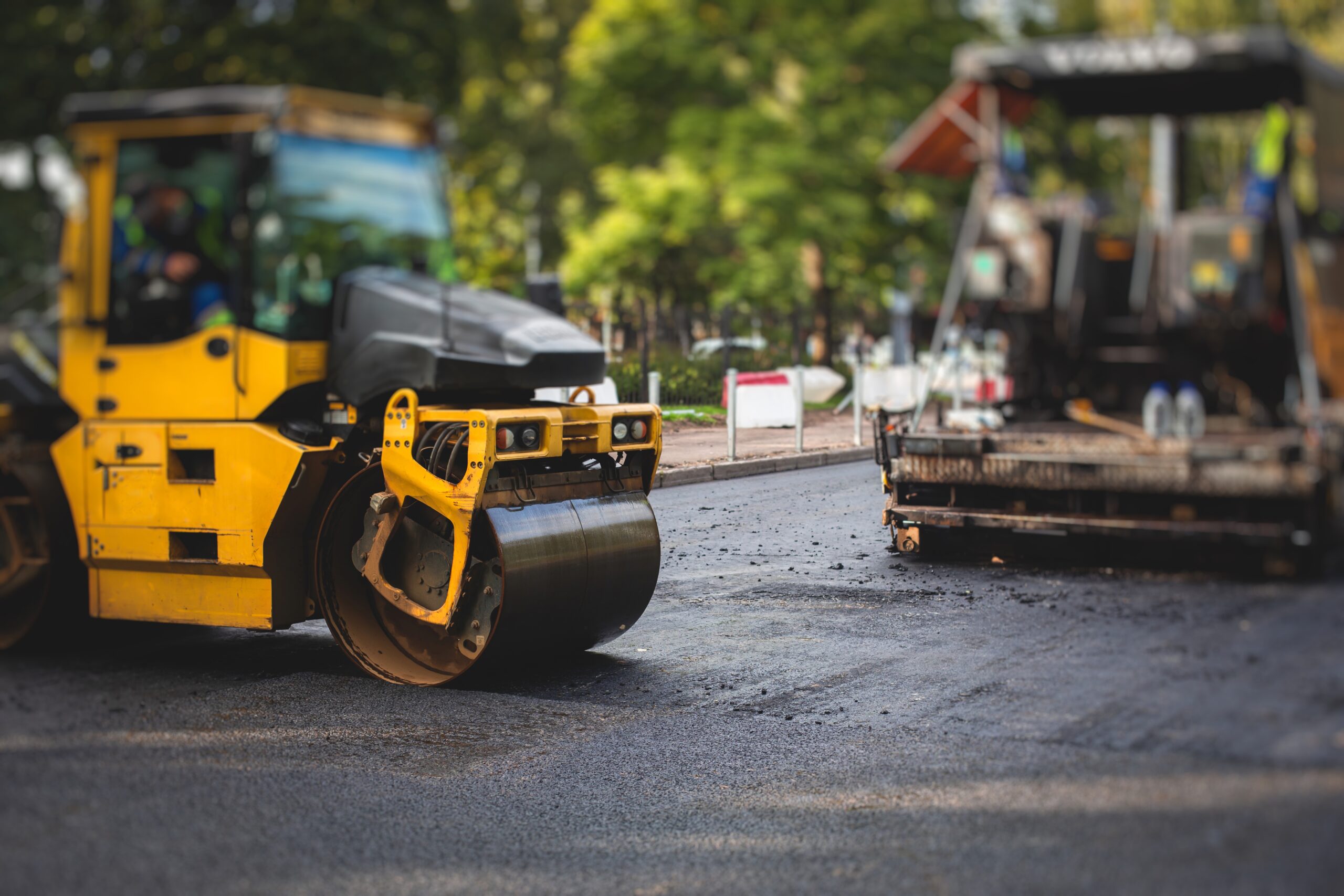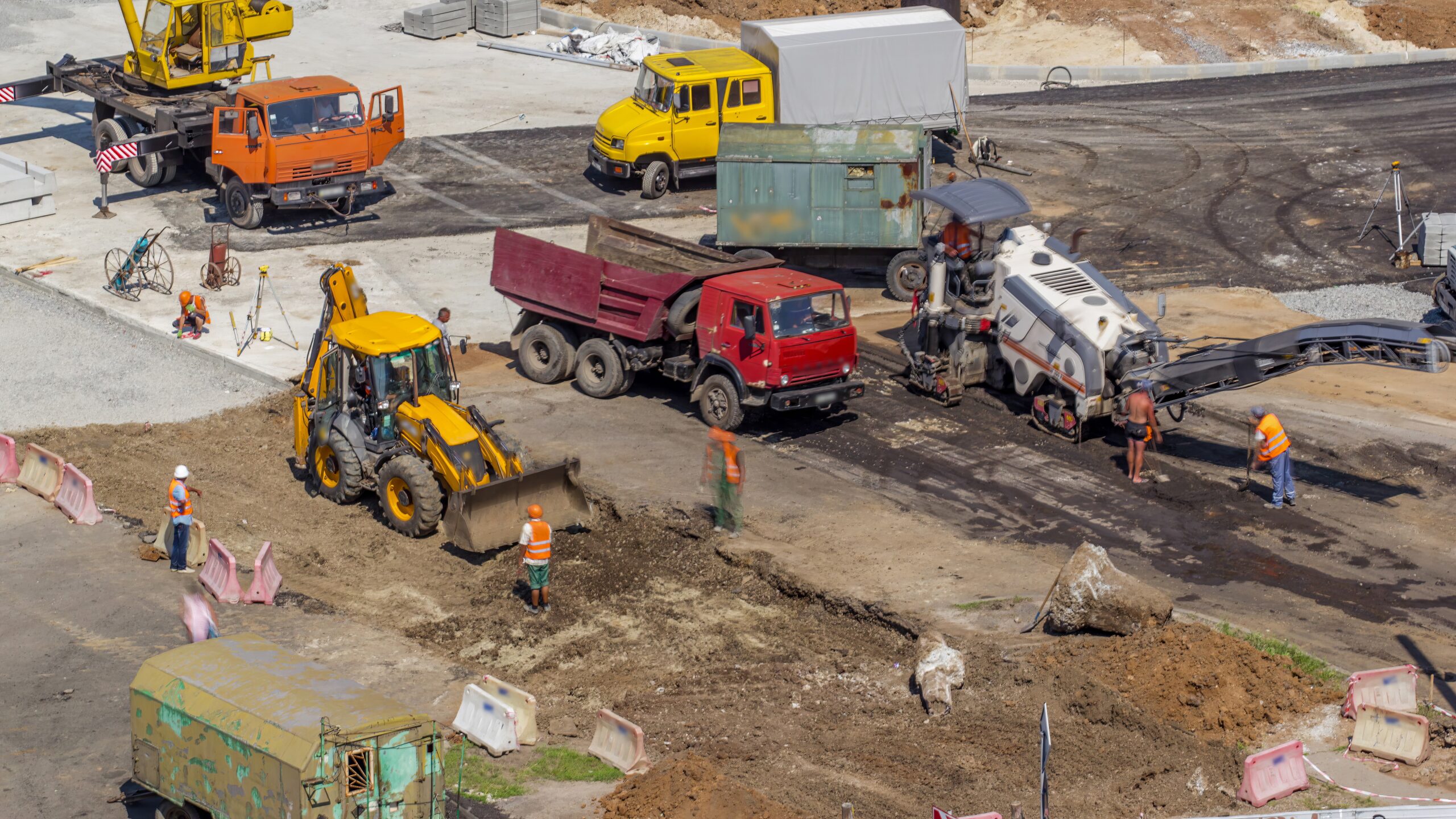
Ever wonder why your commercial parking lot starts fading and cracking just a year or two after paving?
Between harsh sunlight, rain, oil leaks, and the daily pressure from vehicles, your asphalt takes a beating. Without protection, it starts to wear out fast. Small cracks appear. Water seeps in. And soon, you’re facing expensive repairs or full resurfacing.
That’s where sealcoating steps in as a smart and cost-effective solution. Think of sealcoating as your parking lot’s first line of defense, like a protective jacket that guards against weather damage, chemicals, and surface wear.
It not only boosts curb appeal but also extends the life of your asphalt and saves money on future repairs. In this article, you’ll discover the best time to sealcoat your commercial parking lot, how the process works, and why this simple maintenance step can protect your investment for years to come.
Why Sealcoating Is Essential for Your Parking Lot?
Before diving into the best time for sealcoating, let’s first understand what sealcoating is and why it’s important.
Sealcoating is a protective layer applied to asphalt pavements to shield them from damaging elements such as UV rays, water, oil, and chemicals.
Over time, these elements degrade the surface, leading to cracks, potholes, and general wear and tear, which highlights the importance of sealcoating for protection.
Benefits of sealcoating include:
- Protecting the surface from harsh weather conditions
- Preventing cracks and potholes from forming
- Enhancing the curb appeal of your property
- Extending the lifespan of the pavement
For commercial properties, a well-maintained parking lot creates a strong first impression. Sealcoating ensures that your parking lot looks clean, polished, and safe for both customers and employees.
What Factors Determine the Best Time for Sealcoating?
The timing of your sealcoating job is critical. Several factors must be considered to ensure a successful application.
1- Weather Conditions
Sealcoating requires specific weather conditions to be effective. Ideally, temperatures should range between 50°F and 85°F (10°C to 29°C) for optimal application and curing.
Temperature: If it’s too cold, the sealcoat may not cure properly, resulting in a weakened surface. If it’s too hot, it might dry too quickly and fail to bond effectively.
Humidity: High humidity can delay the curing process. Dry, sunny days are ideal.
Precipitation: The pavement must be completely dry before and after application, ideally for at least 24 hours.
2- The Condition of the Asphalt
The surface must be in good condition before applying the sealcoat.
Cracks and potholes should be repaired beforehand; applying sealant over damaged pavement won’t offer proper protection and will lead to a subpar finish.
When Is the Best Time to Sealcoat Your Parking Lot?
Now that we understand the influencing factors, let’s explore the best seasons for sealcoating.
Summer: The Ideal Time for Sealcoating
Why Summer Works Best:
Late spring through early summer offers the most favorable conditions, warm temperatures, and minimal rainfall.
- Temperature: Consistent warmth supports even curing and strong bonding.
- Dry Weather: Low chances of rain reduce risks during application.
- Quick Drying: The warm sun speeds up drying, allowing the lot to reopen sooner.
Pros of Summer Sealcoating:
- Fast drying and curing times
- Optimal conditions for application
- Reduced weather-related delays
Cons:
High demand may lead to limited contractor availability; schedule early!
Fall: A Close Second
Why Fall Is Also a Good Choice:
Fall can also be a great time for sealcoating, especially in regions with mild winters.
- Temperature: Still within the ideal range.
- Humidity: Typically lower, which helps achieve a smoother finish.
- Scheduling: Less demand than in summer, making it easier to book services.
Pros of Fall Sealcoating:
- Comfortable working conditions
- More flexible scheduling
- Excellent results in early to mid-fall
Cons:
- Shorter daylight hours may reduce work time
- Risk of early frost later in the season
Avoid Sealcoating in Winter and Spring
Why These Seasons Don’t Work Well:
Winter: Freezing temperatures and snow make it impossible for sealcoating to cure properly. It can freeze mid-process, resulting in a brittle and ineffective coat.
Spring: Although temperatures may rise, spring often brings excessive rainfall. Wet conditions interfere with application and drying, and early spring temperatures are often still too low.
How Often Should You Sealcoat Your Parking Lot?
Sealcoating isn’t a one-time fix. To keep your parking lot in optimal condition, you should reapply sealcoat every 2 to 3 years.
The exact frequency depends on:
- Traffic volume: Heavily used lots wear out faster.
- Climate: Harsh weather shortens sealcoat lifespan.
- Existing condition: Damaged pavement needs more frequent attention.
How to Prepare Your Parking Lot for Sealcoating
Proper preparation is crucial to ensure that the sealcoat bonds correctly and lasts longer.
Steps to prepare:
- Clean the surface: Remove all dirt, leaves, debris, and oil stains.
- Repair damage: Fill in cracks and potholes to create an even base.
- Dry thoroughly: Ensure no moisture remains before applying the sealcoat.
Common Mistakes to Avoid When Sealcoating
Avoid these costly errors:
- Ignoring weather conditions: Applying sealcoat during rain or extreme cold leads to poor results.
- Skipping prep work: Dirty or damaged surfaces prevent proper bonding.
- Choosing low-quality materials: Cheap sealants wear out quickly and may provide uneven coverage.
How Long Does Sealcoating Last?
On average, a high-quality sealcoat will last 2 to 5 years.
To maintain its benefits:
- Sweep and clean regularly
- Promptly repair cracks and potholes
- Reapply sealcoat as needed
Frequently Asked Questions
How long does it take for sealcoating to dry?
Typically 24 to 48 hours, depending on temperature and humidity.
Is sealcoating necessary for new asphalt?
No, new asphalt typically needs to cure for 6 to 12 months before applying a sealcoat. Sealing too early can trap oils on the surface and prevent proper bonding. Always check with your contractor for the ideal timing.
Will sealcoating fix cracks and potholes?
Sealcoating is a preventative measure, not a repair solution. It protects the surface but won’t fix existing damage. Cracks and potholes must be filled and repaired before sealcoating to ensure a smooth, long-lasting finish.
Can you sealcoat in the rain?
No. Sealcoating requires completely dry conditions before, during, and after application.
What happens if sealcoating is done at the wrong time?
It may not cure properly, leading to early wear, flaking, and ineffective protection.
When Is the Best Time to Sealcoat Your Parking Lot?
The best times to sealcoat your commercial parking lot are during summer and early fall, when temperatures are warm and the weather is dry.
These conditions ensure a smooth, durable finish and maximum protection for your asphalt.
By preparing properly, choosing high-quality materials, and picking the right season, you’ll extend the life of your parking lot and protect your investment for years to come.
Need professional help?
Contact Asphalt Coatings Company today to schedule your commercial sealcoating service and keep your parking lot looking its best.



